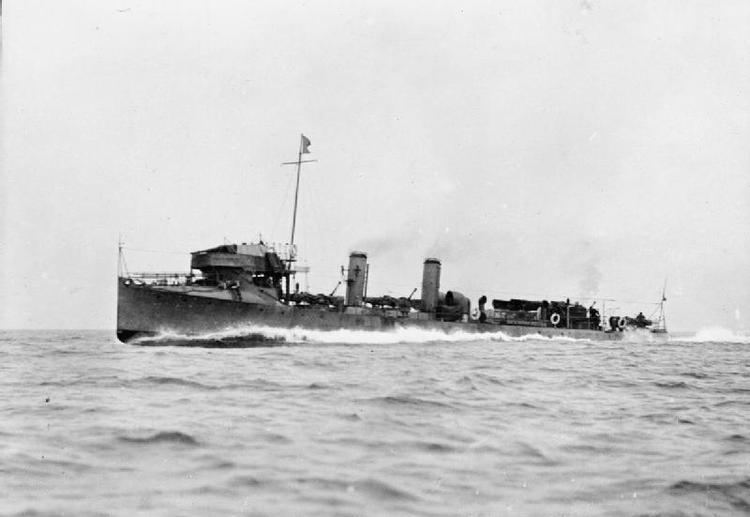Completed 36 Draught 6 ft (1.8 m) | Beam 17.5–18 ft (5.3–5.5 m) | |
 | ||
Builders J S White, Thornycroft, Yarrow, Denny, Hawthorn Leslie, Palmer Displacement 225-255 t normal
~400 t deep load Length 175–180 ft (53–55 m) o/a | ||
The Cricket-class coastal destroyers were a class of small torpedo boat destroyers intended to complement the Royal Navy's Tribal-class destroyers.
The first Cricket and Dragonfly were ordered in 1905 and launched in early 1906. In practice they were not strong enough for open ocean operations and were reclassified as 1st Class Torpedo boats. The first twelve had been given names but were then given the numbers TB1 to TB12; the following two batches of 12 boats were only ever given numbers and were 10 ft longer. The last boat was launched in 1909. Those that survived the war were sold off from 1920 to 1921
They were built by six different yards (13 by White at Cowes, 9 by Thornycroft at Woolston, Hampshire, 4 each by Denny at Dumbarton and Hawthorn at Hebburn, 3 each by Yarrow at Cubitt Town and Palmers at Jarrow. The boats differed in detail but all had two funnels with one of the torpedo tubes on the stern.
By 1914 all boats were serving in North Sea Patrol Flotillas or the Nore Local Defence Flotilla. TB 4 and TB 24 won the Battle Honour Belgian Coast 1915. In 1918 four boats were sent to the Mediterranean: TB 17 and TB 18 served at Gibraltar, TB 29 and TB 30 at Malta, where these went to the breakers.
